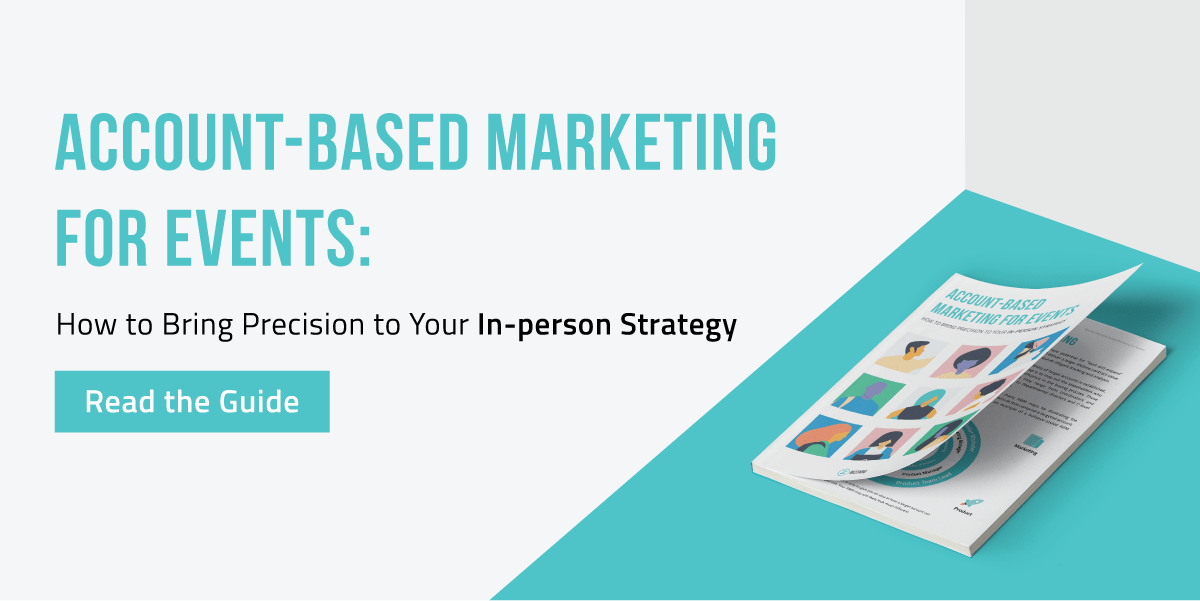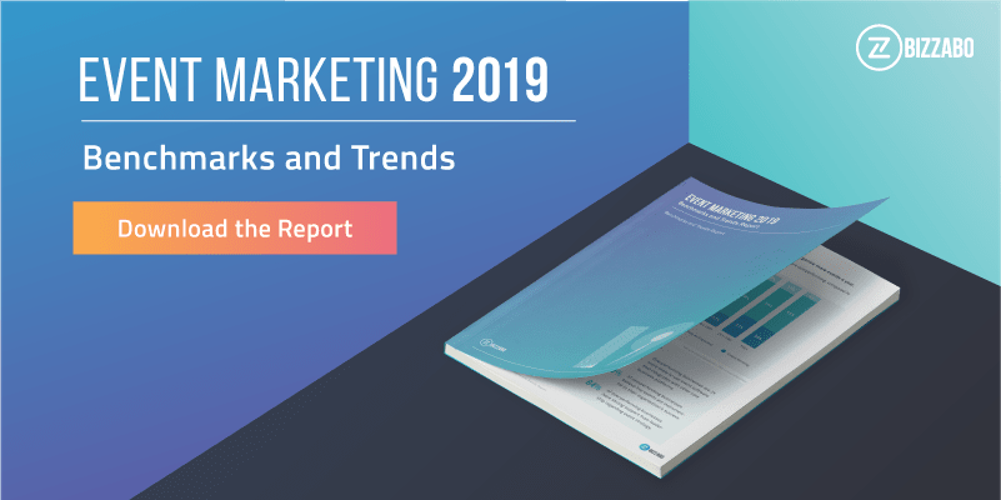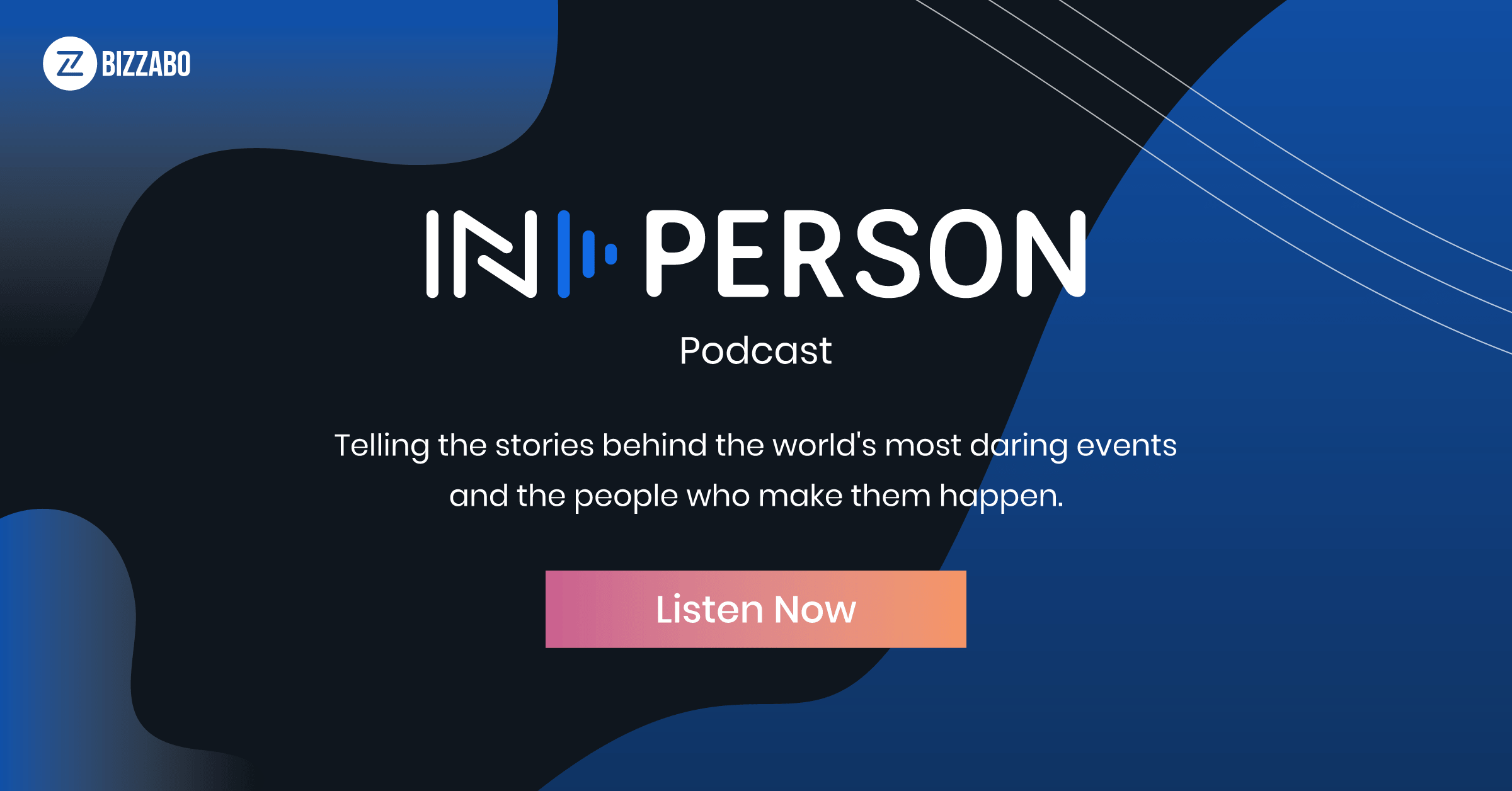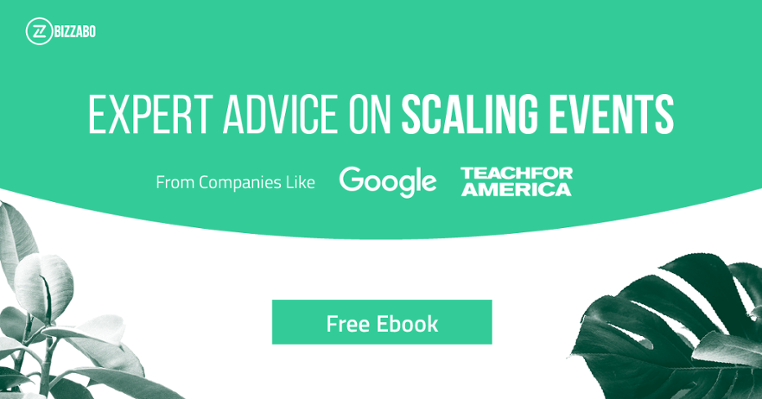Event Roadshow Planning: The 2020 Guide


Looking to take your event on the road? This guide is full of examples, case studies and best practices for planning an event roadshow in 2020—and beyond.
One of the biggest event trends of 2019 was the event roadshow. This event marketing tactic has become increasingly popular as a go-to solution and has the potential to elevate a company’s overall event strategy.
Planning any event involves juggling a lot of moving parts, but the geography-spanning nature of event roadshows means that there are even more moving parts to monitor. Combining your event roadshows with an account-based marketing (ABM) strategy can also help deliver more targeted and specialized content, attract your key stakeholders, and deliver on your event ROI. Taking on such an initiative can prove to be very effective for you and your events team, but requires quality planning from all angles.
Below is an in-depth breakdown of the event roadshow process to help you devise a game plan that aligns with all of your goals, resulting in a more focused event marketing campaign. To help you keep track of every stage of the event roadshow process, we’ve put together this roadshow planning guide:
- What is a Roadshow Series
- Laying the Blueprint for your Event Roadshow
- Event Roadshow Content
- Promoting your Roadshow Event
- Measuring your Roadshow Event
- Event Roadshow Case Studies
What is a Roadshow Series?
An event roadshow series consists of events (usually day or half-day events) in multiple cities with the goal of reaching the target audience in different locations. Typically, a roadshow series includes speakers, panel discussions, product conversations, demos, and networking opportunities. As the event grows, it usually evolves into a user conference or summit.
The value of a roadshow is that it provides in-person conversations between your customers and prospects with your sales, marketing, and product teams in a smaller setting.
Laying the Blueprint for Your Event Roadshow
Before taking to the road, you and your team must devise a clear game-plan that precedes even the logistics and travel details.
During this stage of the planning, what’s important is to establish why a roadshow series is necessary and to specify how each part of the campaign can support the overarching goal. In-depth research and candid discussions about these goals should take place before producing a roadshow.
For instance, if you are planning to take your roadshow to four cities in four countries—say, Toronto, New York, London and Melbourne—you will need to have a clear justification and strategy. You’ll want to have answers to important questions. Why not take your event to four cities in ONE country? How does these cities support your overarching event roadshow campaign? And what about your event roadshow campaign supports your event strategy and key business objectives?
The more clearly you can articulate why your organization needs a roadshow and why each stop along the journey is necessary, the more successful your campaign will be. To determine if you should leverage a roadshow series, you may want to turn to concrete evidence.
“Why do attendees come to an event in the first place? There are three reasons. One, they want to come so that they leave smarter. Two, they want to come to leave more connected, and three they want to come to be more inspired to do their jobs better, faster, easier, or–heck–maybe even find a new job.”
—Dana Pake, InVision
Harnessing Data to Justify Your Roadshow Strategy
Arming yourself with audience data is a great way to pinpoint why you should put together an event roadshow. Some questions you may want to explore include:
- Who is your target audience for the event roadshow?
- How would your target audience benefit from attending the event roadshow?
- What kind of themes, topics, and content would be most relevant to them?
- Which cities would attract the right attendees for a roadshow?
- How would an event roadshow impact your key business goals?
These are important questions to answer before agreeing to such a campaign.
Below are some suggested ways to gather these insights.
1) Explore previous event data
To understand if your target audience is interested in an event roadshow, take a deep dive into all of the information that you’ve collected from attendees at previous events. If you’re using an account-based marketing strategy, compare your attendee data to your targeted list of accounts to see the percentage of accounts attending your events.
This event data will give you a clearer understanding of the types of people that come to your events and present clear insights on whether or not a roadshows resonate with your target audience.
To understand if a roadshow series would resonate with your target audience, you’ll want to ask:
- Do your event attendees match your target accounts and target personas?
- Where are your attendees located?
- What sessions and speakers attract the most attendee engagement?
- What types of tickets do your attendees purchase?
- What attendee and registration feedback are you getting post-event?
You’ll also want to evaluate what cities you want to target for your roadshow series. Your existing event data can help determine:
- Where are your most popular events located?
- How many registrants do you get at each event?
- How many attendees show up to each event?
- Are those attendees aligned with your target accounts?
Answers to these questions will help justify the need for a roadshow as well as inform how you will shape the event content.
Getting to the bottom of these questions will be much easier if you have an ABM-friendly event management platform that integrates with your marketing automation software, CRM, and other essentials of your event tech stack.

For example, Bizzabo’s dashboard (pictured above) provides an in-depth breakdown of metrics. This is very helpful in drawing key insights to inform your decisions regarding the roadshow series. Through this data—in addition to data from your CRM and/or your marketing automation software—you should be able to get a clear conclusion as to why an event roadshow will be successful and how it should be executed.
2) Send out surveys
If you are unsure whether a roadshow will be beneficial for your audience, ask them directly. Send out surveys through email, social media, or even digital paid ads to better understand what the reaction would be.
You can even conduct event surveys during one of your main events to gauge whether a roadshow format would be something your attendees would be interested in. The bottom line is this: Do not be hesitant in directly asking for opinions.
For more inspiration, check out these survey question to ask your attendees.
3) Conduct field research
In the case that you have the time and resources, it would prove useful to take a mini tour of the different locations you anticipate traveling to and gauging the interest level for your event content in those regions.
In addition, you’ll want to see how your event vision can be executed in a certain geographic area. This research will further help formulate why an event roadshow would be a good strategy to take and in what ways it will benefit you and your event brand. Envisioning your event in person will help to solidify the details.
Set Overarching Goals
Once you are able to justify to all relevant stakeholders that executing an event roadshow series would be a beneficial strategy, the next important step is to solidify the overarching goal(s) for the roadshow. Clearly articulate the main objective of the campaign and the rest of the event planning process will fall into place.
Are you hoping to extend your event brand into different regions? Perhaps you want to break into other target demographics that have been previously difficult to gain traction?
Formulate several overarching objectives you’ll definitely want to achieve and make sure to pin them down as you are planning other parts of the event.
Additionally, make sure the goals you are setting are following the S.M.A.R.T acronym, which stands for specific, measurable, achievable, and results-oriented.
Ensuring that your goals meet this criteria will help you to give definitive structure to the planning process. Having detailed, measurable goals is just as important as actually achieving them.
Below is a checklist of questions you should keep in mind while formulating your goals.

“Everything we do has goals and metrics tied to it to ensure that we are creating opportunities to close business for the company. The hyper-focus is growing revenue for the sales team within all of the activations that we have.”
—Lindsay Niemic McKenna, Yext
Selecting Locations
Now that the event goals are set and the roadshow is officially given the green light, the next key part of the initial planning stages is to strategically map out the roadshow route. Where you choose to hold this event will largely impact the success of your event.
As discussed in the previous sections, dive into previous event data to better understand your demographic. Perhaps a significant portion of your target audience is based on the west coast. In this case, having a roadshow event in California may prove successful for your event brand.
 Source: Twitter
Source: Twitter
The image above illustrates one of the locations for Marketo’s 2019 Marketing Nation Roadshow series. The team traveled to San Francisco, New York City, and Salt Lake City to meet with customers and prospects.
It’s evident that Marketo chose major cities leading up to their annual flagship event, Marketing Nation Summit, that takes place in Las Vegas. Marketo made the strategic decision to have the roadshow stop at cities where attendees may have a difficult time attending their main conference.
Event Roadshow Content
Now that the foundational parts of the event roadshow have been put in place, it is now time to flesh out the content of the roadshow. The tricky part of preparing event content for a roadshow series is to create content that is simultaneously tailored to each location’s audience while also maintaining a unifying message. Thus, make sure to set aside enough time to plan out the event content and event marketing so that the topics and messages resonates with the attendees at each stop.
Roadshow Theme
Choosing the right roadshow theme gives you a highly effective framework to organize and plan your content. The right roadshow theme can tee you up for the perfect home run of speakers, sessions, and event activations that are sure to wow attendees in different locations.
To determine the themes and topics that resonates most with your target attendees, take another deep dive into your existing event data for relevant metrics on:
- Event sessions with the most attendee engagement
- Event speakers with the most attendee engagement
- Sessions with the most registrations
- Sessions with the most attendees
- Speakers with the most registrations
- Speakers with the most attendees
- Survey data with content feedback
For ABM event marketers reviewing this data, cross reference your reports with your target accounts to make sure your content theme is engaging your target audience.
Interactive Experiences
One clear advantage that roadshows have over conventional one-off events is that a roadshow series allows the event team to be more agile, giving them more opportunity to flex their creative muscle.
With this in mind, you may find it easier to create interactive experiences that may not be possible in a more structured, large-audience setting. Given that the number of attendees will be considerably smaller than normal conferences, take advantage of creating a workshop event or seminar environment.
This would be a good opportunity to explore some experiential marketing ideas to incorporate into the roadshow. The below example shows how the events team at TaskUs created a unique experience for their target attendees.
During their TaskUs CX Briefing in Austin, the TaskUs team brought together customer success leaders to learn best practices from Samsung, Google Shopping, Indeed, and The Guid Hotels. On top of relevant content, the team added fun activations including ping pong, a magic show, punch and popcorn.
 Source: Twitter
Source: Twitter
Keep in mind that experiential campaigns and event roadshows are not always synonymous. Experiential initiatives are usually stand-alone events that function as a form of brand activation while event roadshows are a continuous series that look to bring direct value to attendees either through product or industry education.
However, that does not mean that roadshow teams can’t learn a thing or two from experiential marketing. For more inspiration, check out this list of exceptional experiential marketing examples.
“One of the reasons why events are so important here at TaskUs is because from the top down everyone believes how effective this channel is for marketing and for achieving business goals.”
—Brandy Sherrer, TaskUs
Partnership Marketing
There are clear benefits to having a marketing campaign on wheels. In addition to getting closer to attendees, an event roadshow increases the likelihood of partnership marketing initiatives because companies you previously wanted to work with are no longer too far for collaboration.
Once the travel route is set in place, reach out to other companies in the area who you have worked with before or new companies that would make for a mutually beneficial partnership. For example, the ABM Leadership Alliance held their first seminar in Boston called ABM by the Numbers. The alliance includes a number of B2B organizations including Bizzabo.
By partnering with alliance members, ABMLA was able to put together an event that attracted B2B marketers focused on driving their event strategies with key metrics. The event also gave attendees a channel to share and discuss key learnings and present case studies.
For more information, check out our key takeaways from the event.
 Source: Bizzabo
Source: Bizzabo
Featuring a partner during the event roadshow, even if it’s only for a workshop, can bring a fresh perspective for attendees and offer additional content that they may find valuable. When reaching out to a potential partner, make sure you can clearly articulate the mutual value that can be had and also be sure to avoid any conflicts of interest. Doing so will solidify the chances of a successful partnership.
For more ideas on partnerships, check out these tips on partner marketing event strategy.
Hometown Heroes
Continuing with the idea of leveraging the mobility of a roadshow, think of ways to incorporate are particularly popular figure with the local attendees. This will give the event an authentic atmosphere with a familiar feel. Attendees will appreciate that you and your team did the research to find out which speakers were from their area and made the conscious effort to include them within the speaker lineup.
 Source: Twitter
Source: Twitter
For example, at Dreamforce 2019 the Salesforce team put together a star studded list of speakers including former president Barak Obama; Tim Cook, CEO at Apple; Phumzile Mlambo-Ngcuka, UN Under-Secretary-General; and Barbara Humpton, President and CEO of Siemens Corporation among others. However, Dreamforce also put together a list of local heroes including Stephen Curry, NBA star for the Golden State Warriors, Ayesha Curry, chef and New York Times best-selling author, and Bay Area cookbook author and producer of the Netflix series “Salt Fat Acid Heat,” Samin Nosrat.
The diverse mix of speakers makes the event incredibly appealing for different attendees and allows for a rich mix of content, inspiration, and innovative talks from a variety of professional perspectives.
Although Dreamforce is not a roadshow, there’s something to be said about the efforts the Salesforce team made to include speakers from the Bay Area.
Keep in mind that athletes, actors, and celebrities can have a soft spot for their hometown or home state. Reach out to all the people who you think would be most relevant to your event content, even if you think it’ll be a long shot. If you don’t even ask, you’ll never know how they’ll respond.
Curious about the world’s most daring events and the people who make them happen? Check out the IN-PERSON Podcast for a behind the scene looks at events from IBM, Forbes, SXSW, and more.
Promoting Your Roadshow Event
Now that the event goals, logistics, and content are all set in place, the final step is to promote the roadshow! With a campaign like this, you’ll want to make sure all your cases are covered. In other words, take advantage of all possible marketing channels to let attendees know that you’ll be stopping by a city near them.
Content Series
Use the roadshow as an opportunity to create an exciting content series that builds up anticipation for the roadshow. The series could focus on the behind-the-scenes of putting together a roadshow, the topics that will be the main theme of each event, or any other concept that can be drawn out for a few weeks.
The goal is to generate momentum going into the roadshow so that attendees are not only aware of the campaign but excited to attend.
 Source: YouTube
Source: YouTube
A great example of an event build-up content is Salesforce’s “Road to Dreamforce” video series that explores the different ways attendees can make the most out of their Dreamforce experience. The videos range from topics that will be covered during the conference to the range of sessions that will be held. Remember that a build-up series can be blog posts, email campaigns, or live video streams as well. Be creative not only in your content but with the medium you choose as well.
Social Media
Take advantage of all social media channels and promote your event on Twitter, LinkedIn, or Facebook using various campaigns across platforms to ensure maximum exposure. Make sure that you and your team decide on a consistent hashtag to use for each post, creating a unified campaign feel.
Because social media’s strength lies in its shareability, make sure to create collateral that is easily shareable for others. This requires extra effort being put into the design elements of your social media campaigns.
Below is a great example of a shareable collateral from the Experience This! event in Seattle:

Use shareable and aesthetically pleasing images such as these for social media campaigns in order to increase potential for virality.
Localize Content
When taking your roadshow on the road and across countries, it’s important to make sure your message not only fits the need of that market or city, but also presents that message in the local language of choice.
For example, if you’re launching a roadshow event in Paris or Tokyo, you may want to look at solutions to provide localized content. You can hire an agency or service provider to translate your event website content and event content into the local language. You can see if your event management solution offers tools to localize your content automatically.
Attendee Promotion
Chances are that you will have attendees from previous events who will vouch for upcoming roadshow. Remember that testimonials and word-of-mouth advocacy is an extremely effective form of marketing! Leverage your existing group of advocates by giving them the opportunity to vouch for your event brand.
Depending on the event tools you are using, you may have access to a variety of features that allow attendees for promote the roadshow on your behalf. For instance, the Bizzabo platform has two novel features that help turn your attendees into event ambassadors.
Social Media Integrations: When attendees register for your event, they have the option of linking different social media accounts to their profile. Then, if they want to share anything about the event, they can easily do so from within the platform. (The entry form will even auto-populate the event hashtag).
Ticket Boost: Ticket Boost allows attendees to get rewarded for promoting your event. When they register for your event and at any other time up to an end date of their choosing, attendees have the option of sharing a special link to your event on social media. If someone purchases a ticket through that link, the original purchaser gets a discount. Ticket Boost can also be set-up so that both the original purchaser and the new purchaser get discounts. The choice is yours.
If you are not using social media integrations or Ticket Boost, there are still many other ways you can turn attendees into event ambassadors. Here are a few:
- Create a special promo code for them to share and track how many times that promo code has been entered
- Offer special prizes for event referrals and track those referrals over the web by assigning each attendee a specific tracking link
- Encourage your attendees to share your event on social media (you can even offer a prize for the post with the most engagement)
For additional examples of how to increase event registrations, check out our article on Event Promo Codes.
Measuring Your Roadshow Event
So you promoted your roadshow events and discovered that they were well-attended, congrats! But how do you know if your event actually was a success?
Going back to the goals of your roadshow series, you will have unique metrics for measuring the success of your event series. For instance:
- If your goal was brand awareness, ticket sales, social media mentions and press hits may be your metrics.
- If your goal was revenue, event sponsorships and ticket sales revenue may be your primary metrics.
- If your goal was customer retention, you may rely on NPS and CSAT scores, and may want to see how customer retention is affected months after your event.
Depending on your KPIs, you may again find it helpful to leverage event technology. Through automated dashboards, you can easily visualize the effectiveness of your events compared to one another. Below is an example of a cross-event analytics dashboard in action.

Bonus: Event Roadshow Case Studies
Now that we’ve outlined the step-by-step process to successful event roadshow planning, let’s dive into some real-life examples. The following case studies demonstrate how the aforementioned tips can help shape your event roadshow strategy into one that aligns with your event brand while also
JOIN: The Tour: Looker
 Source: Looker
Source: Looker
Looker, a B2B SaaS platform focused on data science, held their annual event JOIN in San Francisco. However, after looking at their global customer base, they decided to take key parts of their event content on the road for an 18 city roadshow series called JOIN: The Tour. The successful event series made stops in cities across North America, EMEA, and Japan including Los Angeles, Denver, New York, London, Paris, Tel Aviv, Berlin, and Tokyo.
Along with curating the content for different cities, the Looker team created unique experiences for their attendees by choosing unconventional venues. For example, in 2019 JOIN San Francisco was held at an old car dealership in downtown San Francisco while their London event was held at an old brewery. This allowed the team to create one-of-a-kind experiences and creative branding opportunities.
“We take the best content that we had at JOIN San Francisco and curate it and bring it on the road to all the different cities.”
—Martha Singer, Looker
Tech Learning Lab: Intel
In October 2018, Intel launched its Tech Learning Lab, a mobile truck with hands-on stations for students to learn about artificial intelligence, coding, and robotics. The Tech Learning Lab toured multiple cities across the US to introduce innovative teaching methods and resources to educators and underserved classrooms.
 Source: Twitter
Source: Twitter
Creative activations included using virtual reality to dissect a frog, fly through space to encounter the planets in our solar system, and even take a virtual tour through the Smithsonian Museum. The multi-city tour help build awareness around Intel’s products and how innovative technologies could transform the classroom and encourage more students into STEM programs.
“That’s the perfect marriage of business outcome for schools. Educators need to know that there’s an Intel solution that can help them, can change how things are taught, and delivers accessible learning outcomes for students.”
—Alyson Griffin, Intel
Salesforce World Tour
In addition to their annual user conference, Salesforce also puts together an annual roadshow series known as Salesforce World Tour. Attendees are able to learn about the product, share industry insights, and network with one another in a more intimate setting compared to the company’s flagship event, Dreamforce. Given that Dreamforce attracts over 170,000 attendees, Salesforce realized that creating an roadshow would not only allow people from all around the world experience Salesforce’s event brand, but to also allow previous Dreamforce attendees to connect and engage with one another in a much smaller, less overwhelming setting.

Source: Salesforce
In 2019, the Salesforce World Tour consisted of 12 events spanning North America and Europe. The roadshow stopped in Amsterdam, Atlanta, Boston, Dallas, London, Los Angeles, New York City, Paris, Sydney, Tokyo, Toronto, and Washington, D.C. This selection of cities makes it evident that the roadshow team focused on geographic areas that were furthest away from San Francisco since Dreamforce takes place in the bay every year.
This strategy allowed for the Salesforce brand to gain recognition and credibility among audiences that either may have been unaware of the product or who never had the chance to engage with brand in-person due to the far distance of Dreamforce. Event roadshows are especially effective for disseminating the company brand without diluting it in the process, which is exactly what the 2019 Salesforce World Tour was able to achieve.
Key Takeaways: It’s Your Event Roadshow
- Focus on the why: Like any marketing strategy, the why behind your event strategy will help you determine the audience, partners, content and relevant metrics.
- Review the data: Your customer data and event data can help you identify the optimal destinations for your roadshow strategy.
- Capitalize on scale: You roadshow is not expected to be a huge event. Use that to your advantage. Explore how you can bring creative and personalized experiences to your smaller-scale roadshow stops.
Editor’s Note: This post was originally published on February 4, 2019 and has since been updated.











